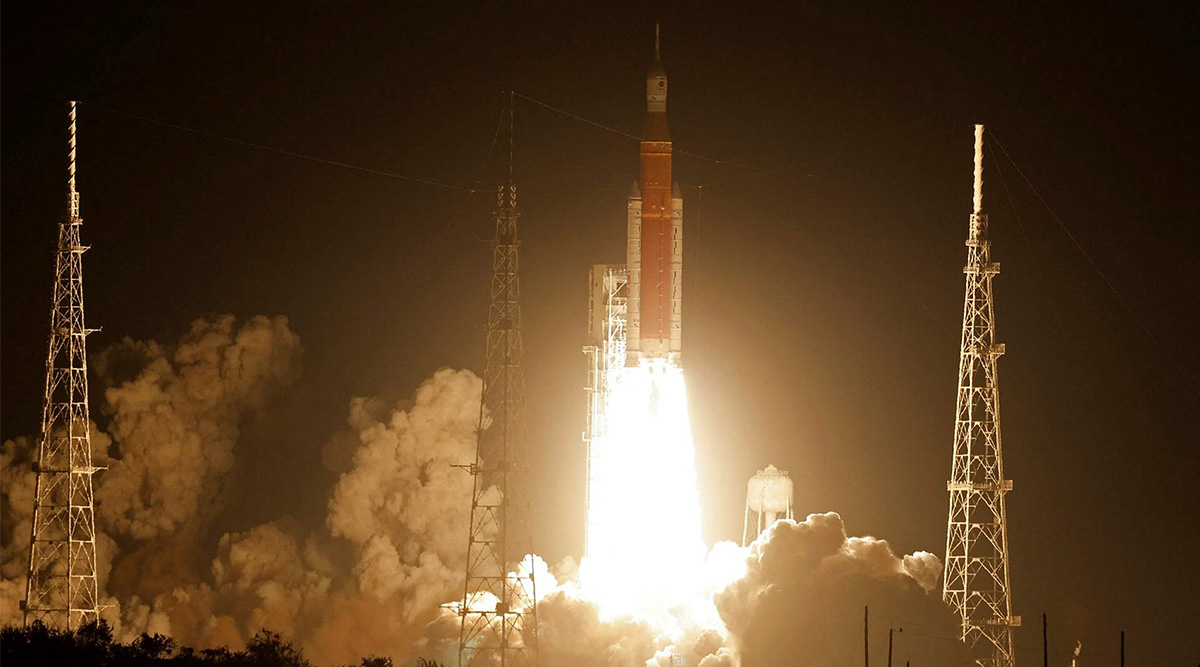 NASA's next-generation moon rocket, the Space Launch System (SLS) rocket with the Orion crew capsule, lifts off from launch complex 39-B on the unmanned Artemis1 mission to the moon at Cape Canaveral, Florida, U.S. November 16, 2022. REUTERS/Joe Skipper
NASA's next-generation moon rocket, the Space Launch System (SLS) rocket with the Orion crew capsule, lifts off from launch complex 39-B on the unmanned Artemis1 mission to the moon at Cape Canaveral, Florida, U.S. November 16, 2022. REUTERS/Joe SkipperNASA’s Artemis 1 mission successfully lifted off from the Kennedy Space Centre in cape Canaveral, Florida at 12.17 PM on Wednesday, November 16. Plagued by fuel leaks and other technical issues in the past, the SLS rocket and Orion spacecraft were finally launched during NASA’s third attempt.
Eight minutes after the launch, the core stage engines cut off and the core stage separated from the rest of the rocket, allowing the Orion spacecraft to be propelled into space by the interim cryogenic propulsion stage (ICPS). NASA then deployed Orion’s four solar panels, allowing the spacecraft to power itself.
Although the launch happened successfully, it was not without its glitches. For its third attempt at launch, the American space agency said it was would follow “kinder, gentler” tanking operation procedures. And for a while, it seemed to be working. The liquid hydrogen and liquid oxygen tanks of the core stage were fuelled successfully without any untoward incidents.
After that, the core stage went into “replenish mode,” where the fuel lost to boil-off was being topped up. Launch teams then began fuelling the interim cryogenic propulsion stage (ICPS), the upper stage of the rocket. When the ICPS liquid oxygen tank got filled, NASA teams noticed an “intermittent leak” from the replenish valve of the liquid hydrogen tank on the core stage.
At this point, the launch director decided to mobilise a “red crew” team to fix the issue. The red crew is specially trained to carry out potentially dangerous operations in and around a tanked launch vehicle. The team told the director that the issue could be fixed in 15 minutes. But they took a little more than an hour to enter the launch pad, tighten bolts on the valve and leave the launchpad area.
Soon after this leak was resolved, a US Space Force Eastern Range officer told the launch director that they are “no-go” for the operation because of a loss of signal from a radar site. This radar site played an important role in the flight termination system that would allow the Space Force to destroy the rocket in case it went off-course and posed a threat to the public.
Range later found out that this signal loss was caused by a malfunctioning ethernet switch. It took over one-and-a-half hours to resolve the issue and perform a test of the flight termination system. Due to tall these issues, the mission was unable to launch at the beginning of the launch window or the original “T time” of 11.34 AM IST. But NASA was able to fix all these issues and launch the mission a little over two hours later.
